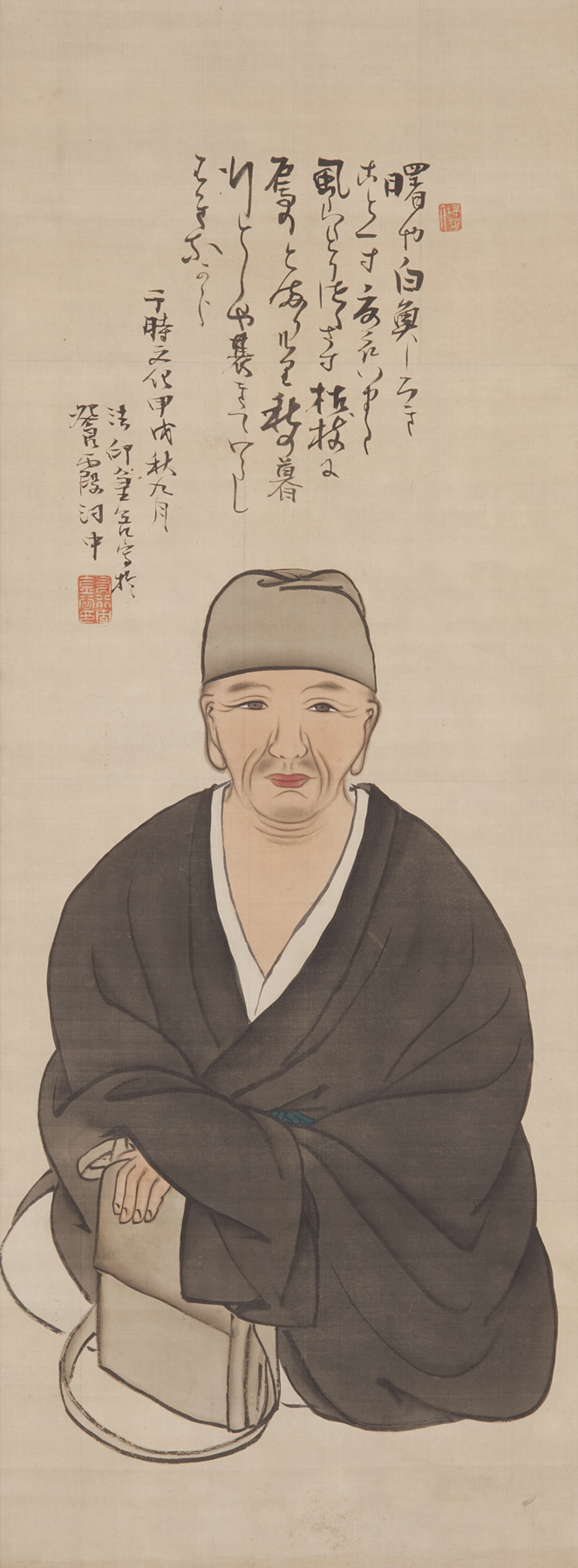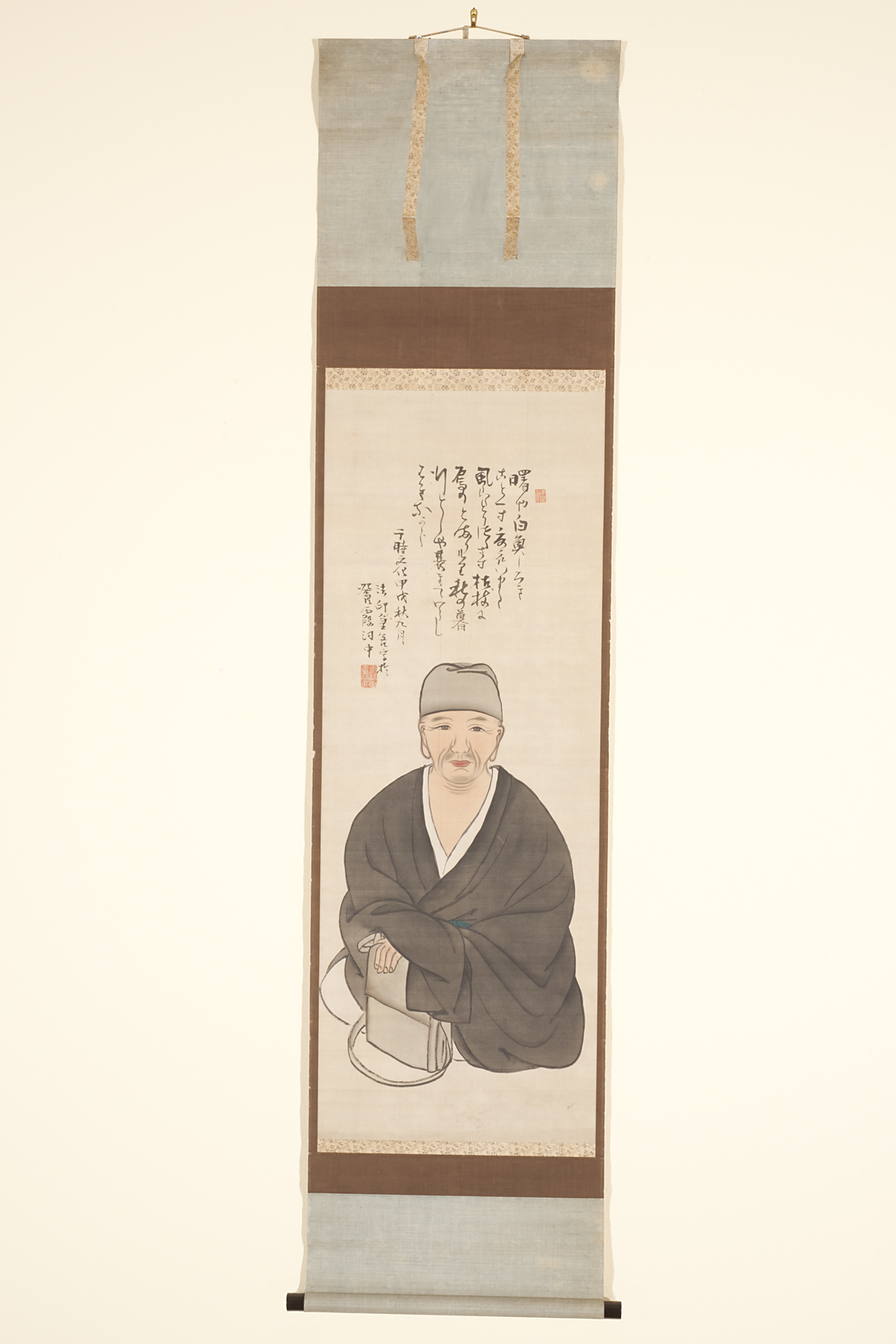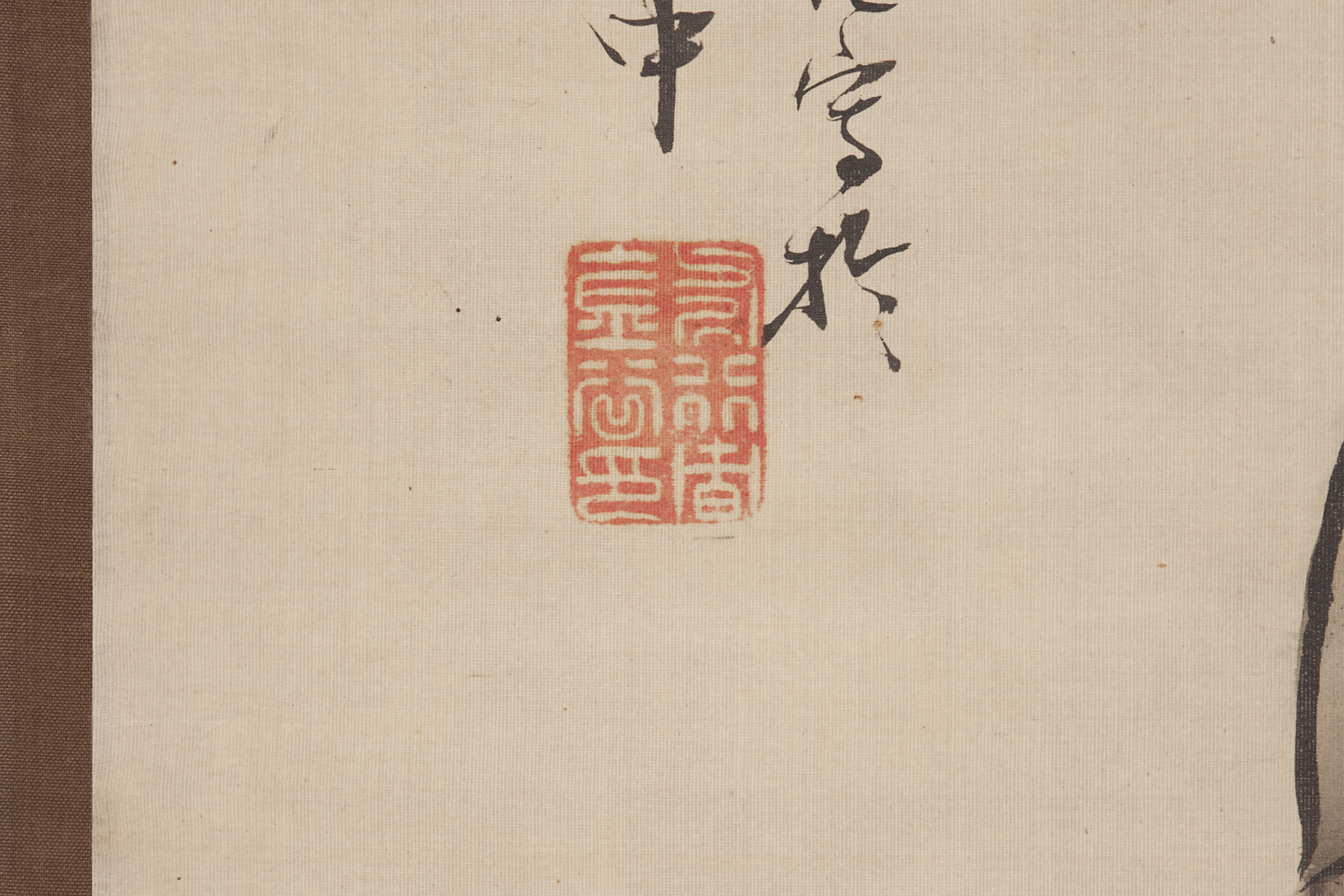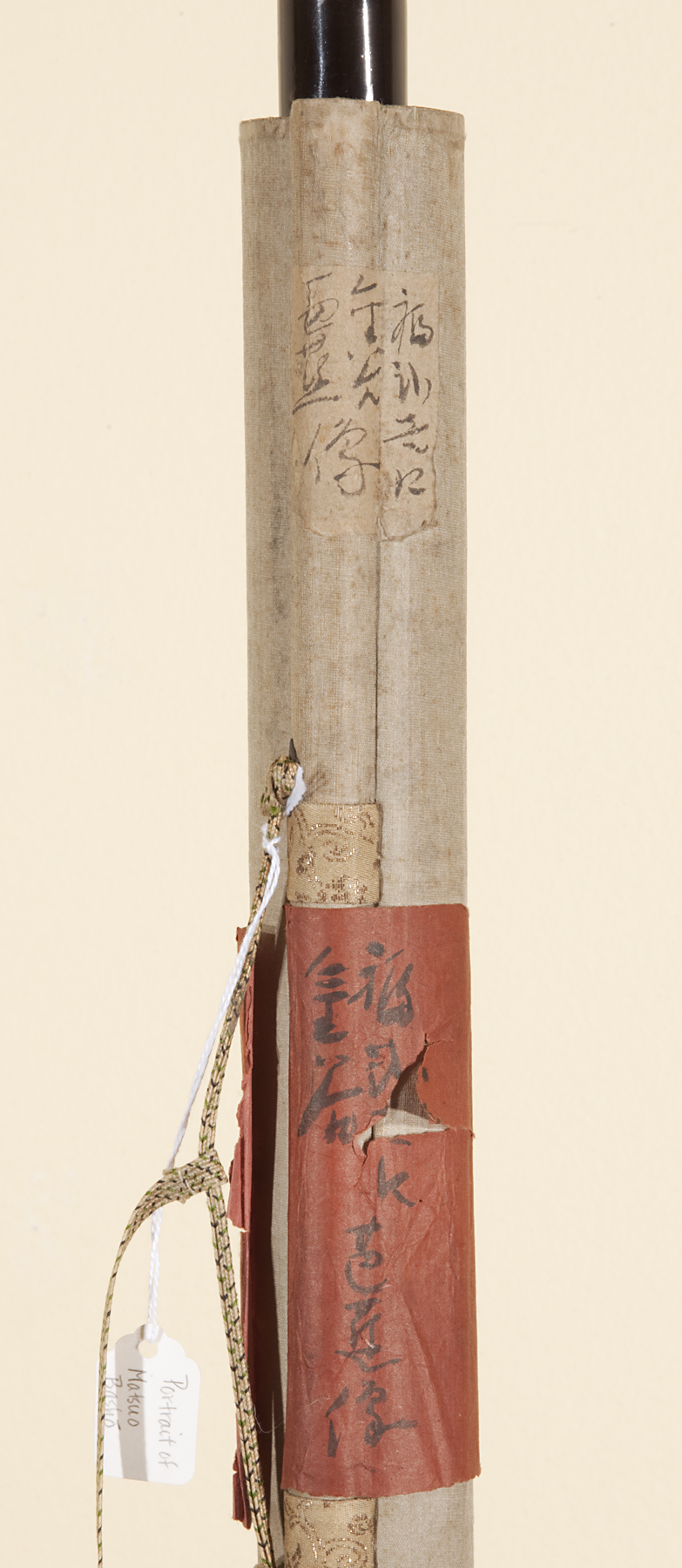芭蕉像 Basho-zō (Portrait of Bashō), Yokoi Kinkoku
Artwork Overview
Yokoi Kinkoku, artist
1761–1832
芭蕉像 Basho-zō (Portrait of Bashō),
1814, Edo period (1600–1868)
Where object was made: Japan
Material/technique: ink; color; silk
Dimensions:
Image Dimensions Height/Width (Height x Width): 111.3 x 41.2 cm
Image Dimensions Height/Width (Height x Width): 43 13/16 x 16 1/4 in
Sheet/Paper Dimensions (Height x Width): 188.3 x 44.2 cm
Sheet/Paper Dimensions (Height x Width): 74 1/8 x 17 3/8 in
Roller Dimensions (Width x Diameter): 49.7 cm
Roller Dimensions (Width x Diameter): 19 9/16 in
Image Dimensions Height/Width (Height x Width): 111.3 x 41.2 cm
Image Dimensions Height/Width (Height x Width): 43 13/16 x 16 1/4 in
Sheet/Paper Dimensions (Height x Width): 188.3 x 44.2 cm
Sheet/Paper Dimensions (Height x Width): 74 1/8 x 17 3/8 in
Roller Dimensions (Width x Diameter): 49.7 cm
Roller Dimensions (Width x Diameter): 19 9/16 in
Credit line: Museum purchase: R. Charles and Mary Margaret Clevenger Fund
Accession number: 1998.0140
Not on display
If you wish to reproduce this image, please submit an image request






